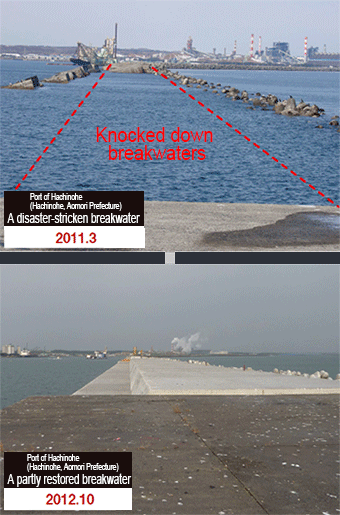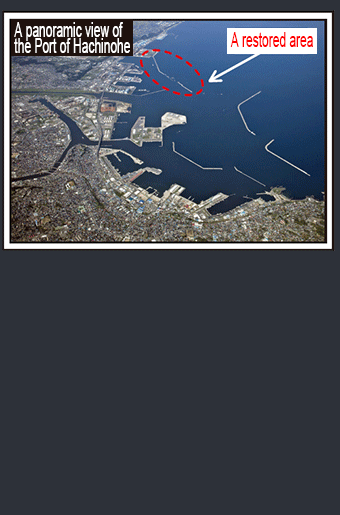Harbor
Disaster waste was used to restore the affected harbors.
Disaster waste (tsunami sediment) was used to promptly restore the damaged breakwaters.
About 40% of total 3,494 m caissons (concrete boxes) used in the north breakwaters of the Port of Hachinohe were knocked down by the tsunami. The damaged caissons were to be replaced by 75 new caissons.
In the meantime, a huge amount of sediment left by the tsunami in Hachinohe had been a problem to the city. About 14,000 m3 tsunami sediment (equivalent to the volume hauled by 2,800 dump trucks) was chosen to be used as filler of the new caisson.
About 800 m of the north breakwaters has been restored so far, allowing safe entry of cargo ships.


The international logistic center has resumed its operations.
The “International Offshore Container Terminal” of the Port of Sendai-Shiogama (Minato, Sendai), a hub of industry and economy of the Tohoku region, has resumed its operations just 10 months after the earthquake.
The “International Offshore Container Terminal” of the Port of Sendai-Shiogama, once severely affected by the earthquake and tsunami, has resumed its operations on January 22, 2012.
While the Port of Sendai-Shiogama had been closed, increased land transportation cost due to long haul had been a great challenge for the industries. Reopening of the port is expected to contribute to a faster and more extensive reconstruction of the Tohoku region.
Restoration of the main facilities of the Port of Sendai-Shiogama in Minato, Sendai is scheduled to be completed by the end of the fiscal year 2012.

